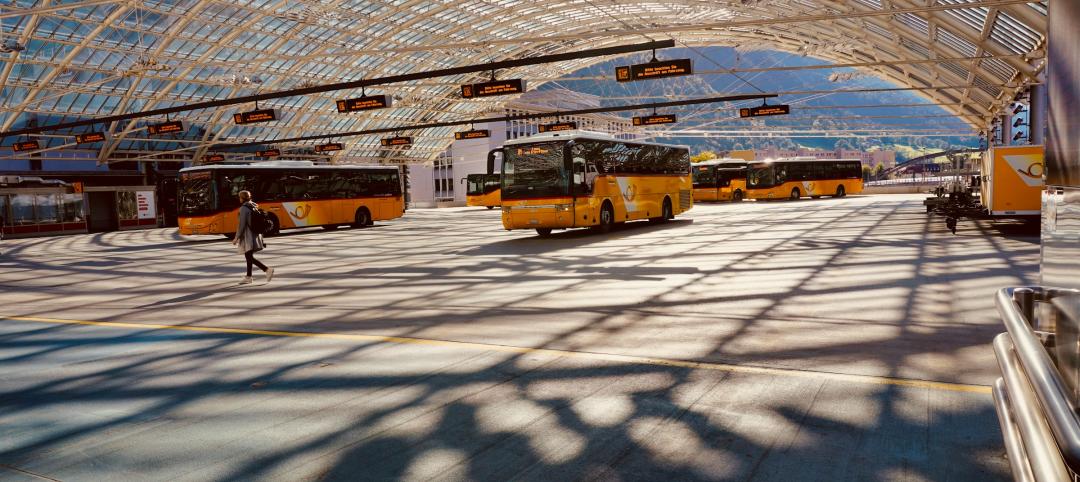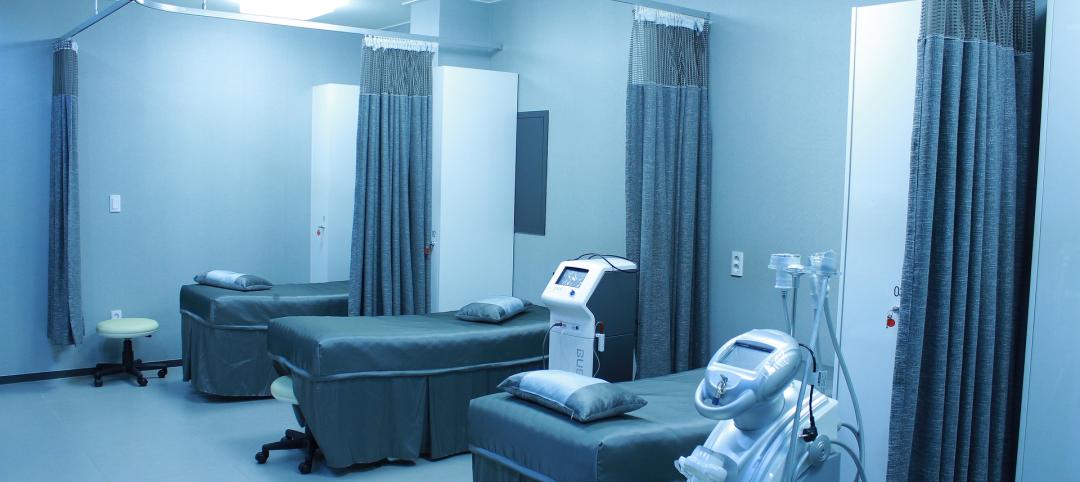 |
|
Workers inspect a rooftop PV installation. Improper handling, storage, or installation of the PV panels can cause damage to the roof. |
The popularity of rooftop photovoltaic (PV) panels has exploded during the past decade as Building Teams look to maximize building energy efficiency, implement renewable energy measures, and achieve green building certification for their projects.
However, installing rooftop PV systems—rack-mounted, roof-bearing, or fully integrated systems—requires careful consideration to avoid damaging the roof system. Improper handling, storage, or installation of the PV panels can cause damage to the roof, which can lead to moisture intrusion, wind uplift problems, and even structural damage. In addition, rooftop PV systems should be designed with future maintenance, roof repairs, and fire-suppression efforts in mind.
BD+C asked a pair of top-notch roofing experts to identify the most critical design, construction, and installation considerations. They offer the following tips:
 |
|
Photovoltaic arrays should be confi gured to allow access for future maintenance, roof repairs, and fire-suppression efforts. |
1. Verify the fire rating of your rooftop photovoltaic system.Most rooftop PV systems qualify for a Class C fire rating, while most of the roof coverings over which these systems are installed are fire rated Class A or B, says Philip D. Dregger, PE, RRC, principal with roof and waterproofing consultant Technical Roof Services Inc., Concord, Calif.
Dregger says the fire rating, especially spread of flame, is critical, especially for roof-bearing and rack-mounted systems. For instance, Building Teams may need to take steps like incorporating half-inch gypsum board into the assembly to obtain the proper fire rating.
For sloped roofs, Dregger says it is especially important to confirm that the required fire classification is available at the slope required. “For instance, standing-seam metal roofs routinely qualify as Class A fire-resistant on unlimited slopes, whereas the same standing-seam metal roofs covered with thin-film, flexible PV panels have significant slope restrictions,” he says.
2. Flashing detail is critical for maintaining the warranty. Flashing detail work must be performed by a contractor approved by the roof membrane manufacturer, says Mike Ennis, technical director of the Single Ply Roofing Industry (SPRI), Waltham, Mass., which recently convened a task force to identify key rooftop PV installation issues. “It's not so much a difference in the details as it is that the details are properly completed,” says Ennis.
Building owners must get such permission in advance from the roofing manufacturer or the warranty may be voided. The main concern, says Ennis, is keeping a record of alterations to the roof system. “For example, if a manufacturer gets a leak call immediately after an alternation is completed, they know where to start looking for the leak,” he says.
3. PV systems must be properly marked. Marking is needed to provide emergency responders with appropriate warning and guidance with respect to working around and isolating the solar electric system. Proper marking helps responders identify energized electrical lines that connect the solar modules to the inverter, according to the California Department of Forestry and Fire Protection's (CDFFP) Solar Photovoltaic Installation Guideline (www.osfm.fire.ca.gov/pdf/reports/solarphotovoltaicguideline.pdf).
Materials used for marking must be weather resistant and should be placed adjacent to the main service disconnect in a location clearly visible from the location where the lever is operated.
4. Make sure to protect the roof system while handling PV panels. Damage to roof systems, especially single-ply membranes, often occurs during the handling of the PV panels. SPRI's Ennis offers four tips for avoiding roof system damage while moving and storing PVs:
-
Store boxed PV units over joists to avoid deflecting the metal deck.
-
If boxed units are palletized, place a cushion layer of plywood between the pallet and the roof surface.
-
Do not point-load the roof surface by placing the corner of a hard panel directly on the surface.
-
Use moving equipment fitted with pneumatic tires to transport equipment and materials over the finished roof surface.
5. In retrofit projects, consider roof life before installing PVs. Due to potentially high costs associated with temporarily disconnecting and moving PV panels to execute roof repairs, Building Teams should assess the remaining life of the existing roof covering as part of a PV project, says Dregger.
He says serious consideration should be given to replacing the existing roof covering as part of a PV project. At the very least, says Dregger, you should investigate and repair roof leaks and perform any preventive maintenance work, even if it is not scheduled to be performed for a couple of years.
6. Pay close attention to the location of direct current (DC) conductors. Conduit, wiring systems, and raceways for photovoltaic circuits should be located as close as possible to the ridge or hip or valley and from the hip or valley as directly as possible to an outside wall to reduce trip hazards and maximize ventilation opportunities, according to the CDFFP's installation guidelines.
DC combiner boxes should be located such that conduit runs are minimized in the pathways between arrays. To limit the hazard of cutting live conduit in venting operations, DC wiring should be run in metallic conduit or raceways when located within enclosed spaces in a building and should be run (to the maximum extent possible) along the bottom of load-bearing members.
7. Provide for fall protection in certain cases. In retrofit projects, if the PV modules direct foot traffic to within six feet of unprotected roof edges or roof openings, fall protection provisions, such as guardrails and roof hatches, are a must, says Dregger.
8. Configure PV arrays to allow access for future maintenance, roof repairs, and fire-suppression efforts. CDFFP's installation guidelines recommend a minimum of six feet of clearance along the perimeter of the roof and at least four feet around roof access hatches and skylights. Also, pathways should be provided along the centerline of both axes of the roof. Locate these pathways over structural members.
9. Make sure integrated PV panels can handle high winds. For semi-rigid PV panels adhered over mechanically attached single-ply roofs, make sure that the PV panels can accommodate billowing of the singly-ply membrane during high-wind conditions without incurring damage, such as cracking, splitting, or rupture. Dregger recommends installing air retarders and supplemental membrane fasteners around each PV panel to help avoid damage.
Related Stories
Construction Costs | Jan 22, 2024
Construction material prices continue to normalize despite ongoing challenges
Gordian’s most recent Quarterly Construction Cost Insights Report for Q4 2023 describes an industry still attempting to recover from the impact of COVID. This was complicated by inflation, weather, and geopolitical factors that resulted in widespread pricing adjustments throughout the construction materials industries.
Transit Facilities | Jan 22, 2024
Top 40 Transit Facility Architecture Firms for 2023
Perkins&Will, HDR, Gensler, Skidmore, Owings & Merrill, and HNTB top BD+C's ranking of the nation's largest transit facility architecture and architecture engineering (AE) firms for 2023, as reported in the 2023 Giants 400 Report. Note: This ranking includes design revenue for work related to bus terminals, rail terminals, and transit stations.
Hotel Facilities | Jan 22, 2024
U.S. hotel construction is booming, with a record-high 5,964 projects in the pipeline
The hotel construction pipeline hit record project counts at Q4, with the addition of 260 projects and 21,287 rooms over last quarter, according to Lodging Econometrics.
Modular Building | Jan 19, 2024
Virginia is first state to adopt ICC/MBI offsite construction standards
Virginia recently became the first state to adopt International Code Council/Modular Building Institute off-site construction standards.
Modular Building | Jan 19, 2024
Building with shipping containers not as eco-friendly as it seems
With millions of shipping containers lying empty at ports around the world, it may seem like repurposing them to construct buildings would be a clear environmental winner. The reality of building with shipping containers is complicated, though, and in many cases isn’t a net-positive for the environment, critics charge, according to a report by NPR's Chloe Veltman.
Sponsored | BD+C University Course | Jan 17, 2024
Waterproofing deep foundations for new construction
This continuing education course, by Walter P Moore's Amos Chan, P.E., BECxP, CxA+BE, covers design considerations for below-grade waterproofing for new construction, the types of below-grade systems available, and specific concerns associated with waterproofing deep foundations.
Sponsored | Performing Arts Centers | Jan 17, 2024
Performance-based facilities for performing arts boost the bottom line
A look at design trends for “budget-wise” performing arts facilities reveals ways in which well-planned and well-built facilities help performers and audiences get the most out of the arts. This continuing education course is worth 1.0 AIA learning unit.
Giants 400 | Jan 15, 2024
Top 130 Hospital Facility Architecture Firms for 2023
HKS, HDR, Stantec, CannonDesign, and Page Southerland Page top BD+C's ranking of the nation's largest hospital facility architecture and architecture engineering (AE) firms for 2023, as reported in the 2023 Giants 400 Report.
Adaptive Reuse | Jan 12, 2024
Office-to-residential conversions put pressure on curbside management and parking
With many office and commercial buildings being converted to residential use, two important issues—curbside management and parking—are sometimes not given their due attention. Cities need to assess how vehicle storage, bike and bus lanes, and drop-off zones in front of buildings may need to change because of office-to-residential conversions.
MFPRO+ News | Jan 12, 2024
As demand rises for EV chargers at multifamily housing properties, options and incentives multiply
As electric vehicle sales continue to increase, more renters are looking for apartments that offer charging options.















